
Celebrate National Audiobook Month with The Best Books!
June 5, 2019
Ultimate 2019 Summer Reading List
June 17, 2019Storytelling Dice Activity for Kids
We are shaped by the stories we share with one another. From great epics like the Odyssey to our personal family tales, such as the story of the day you were born, stories are just as ingrained in our lives as they were hundreds of years ago. They are an intrinsic part of our culture–books, movies, tv shows, news media, religion, art, social media, you name it! We love stories because they connect us.
Benefits of Storytelling
Storytelling is an age-old tradition used for teaching! Telling stories helps children develop essential communication skills. Here are just a few of the benefits:- Improves listening skills
- Instills morals and ethics
- Opens the door to new cultures and customs
- Encourages creativity and imagination
- Challenges memory skills
- Enhances vocabulary
The Secret Sauce about storytelling: it’s pivotal for the early literacy skills that students need for life-long learning!
Storytelling is the life and soul of the library. If you don’t already, you should be including storytime into your library program. We’ve included a free library activity below, so you can incorporate this lesson plan into your program. We’ve also included key elements of stories to help with the storytelling activity!
Storytelling Fairytale Dice Activity
Storytelling is a wonderful, engaging tool for kids! Telling stories encourages students to be creative and use their imagination. For our Fairytale Dice Activity, you’ll only need to print our dice cut-outs and use tape to make the cube!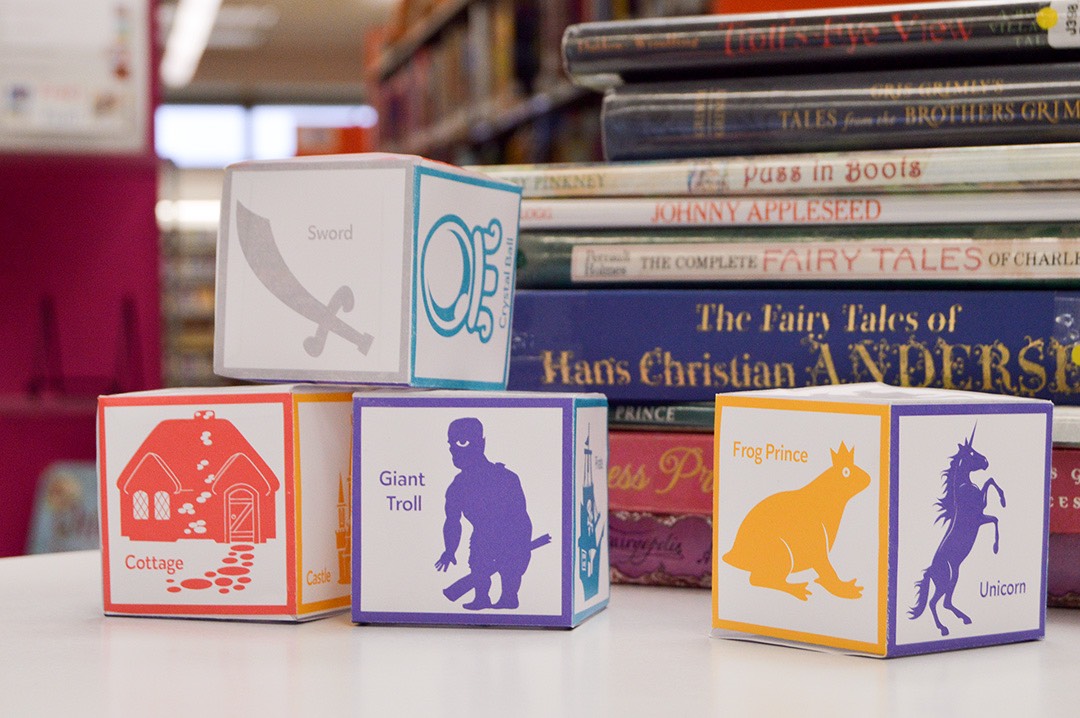
Download the Storytelling Activity
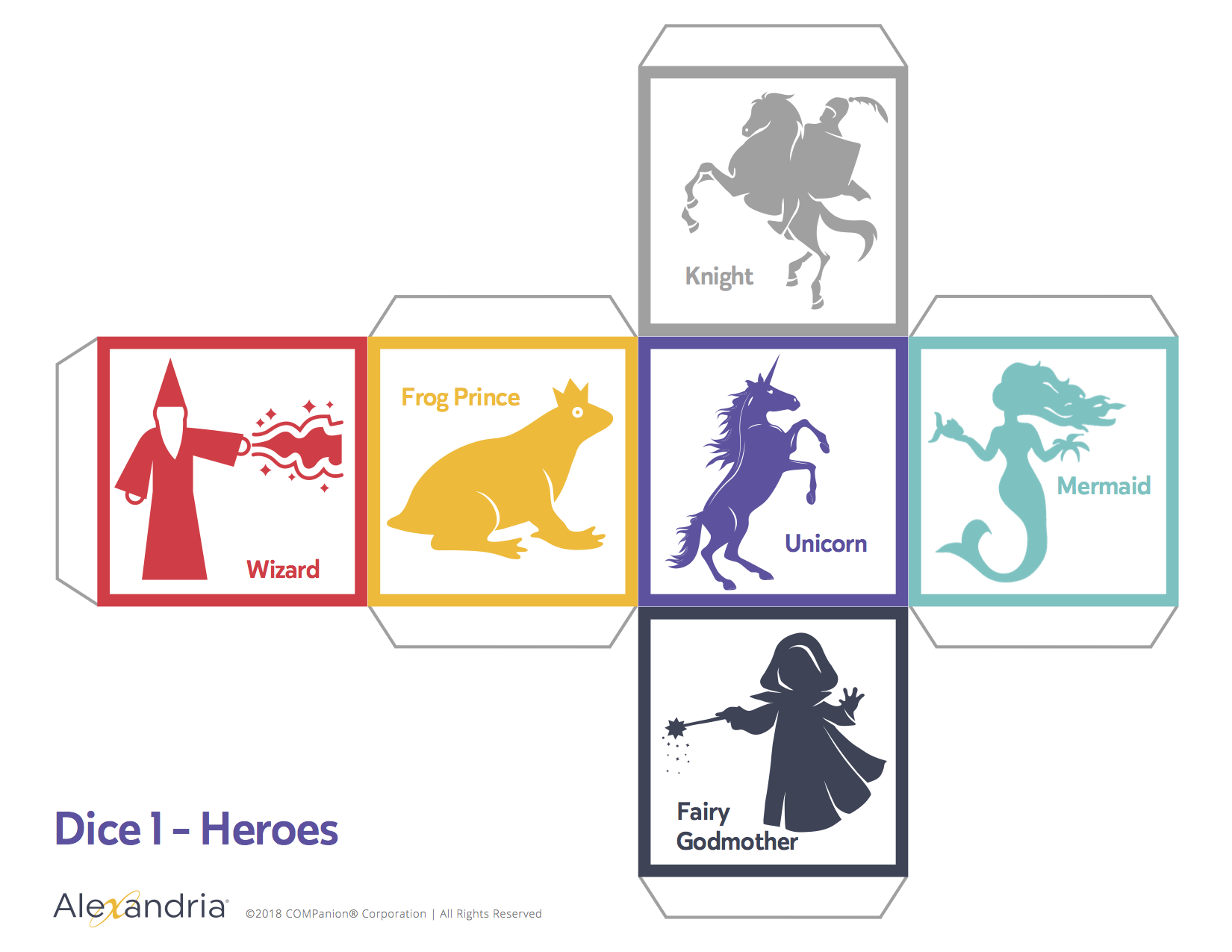
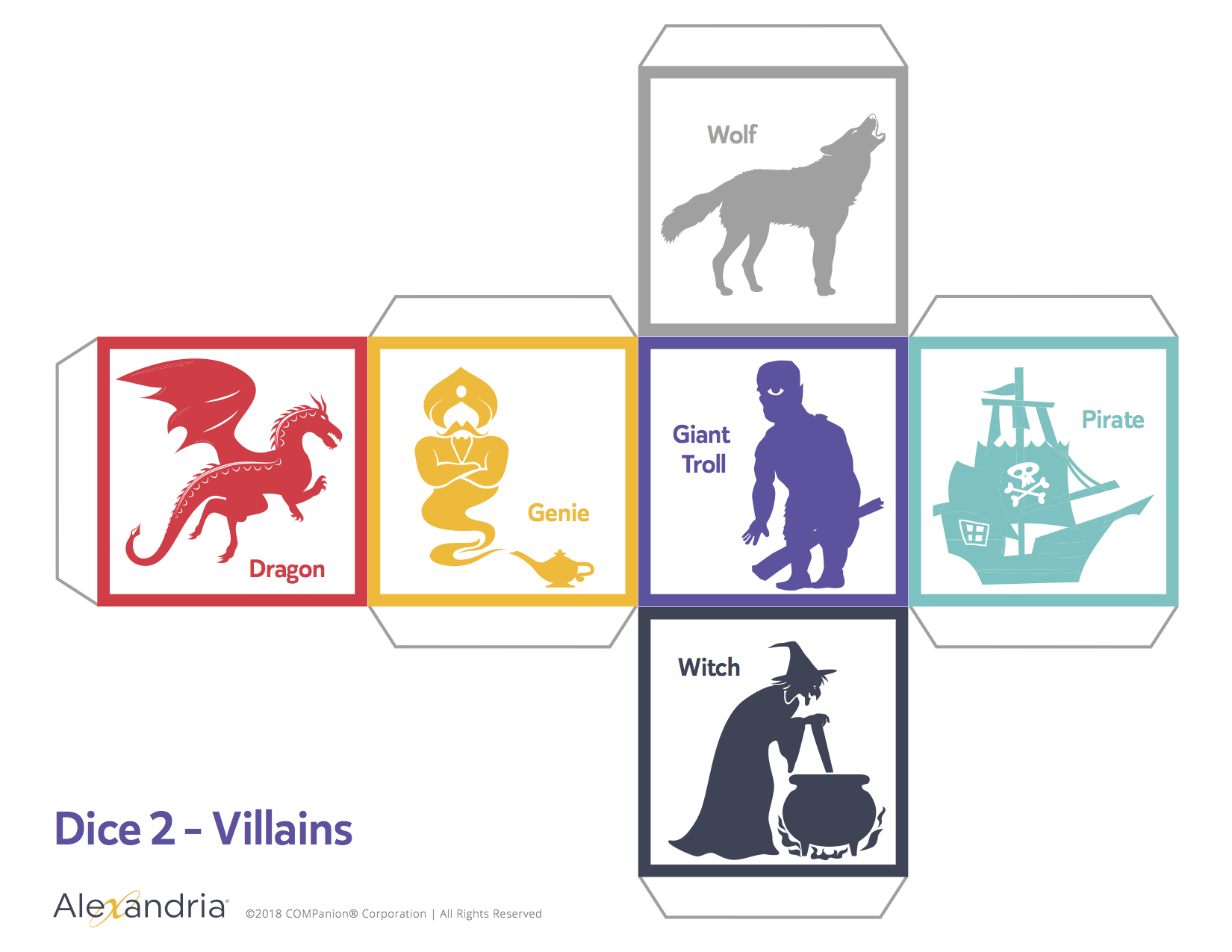
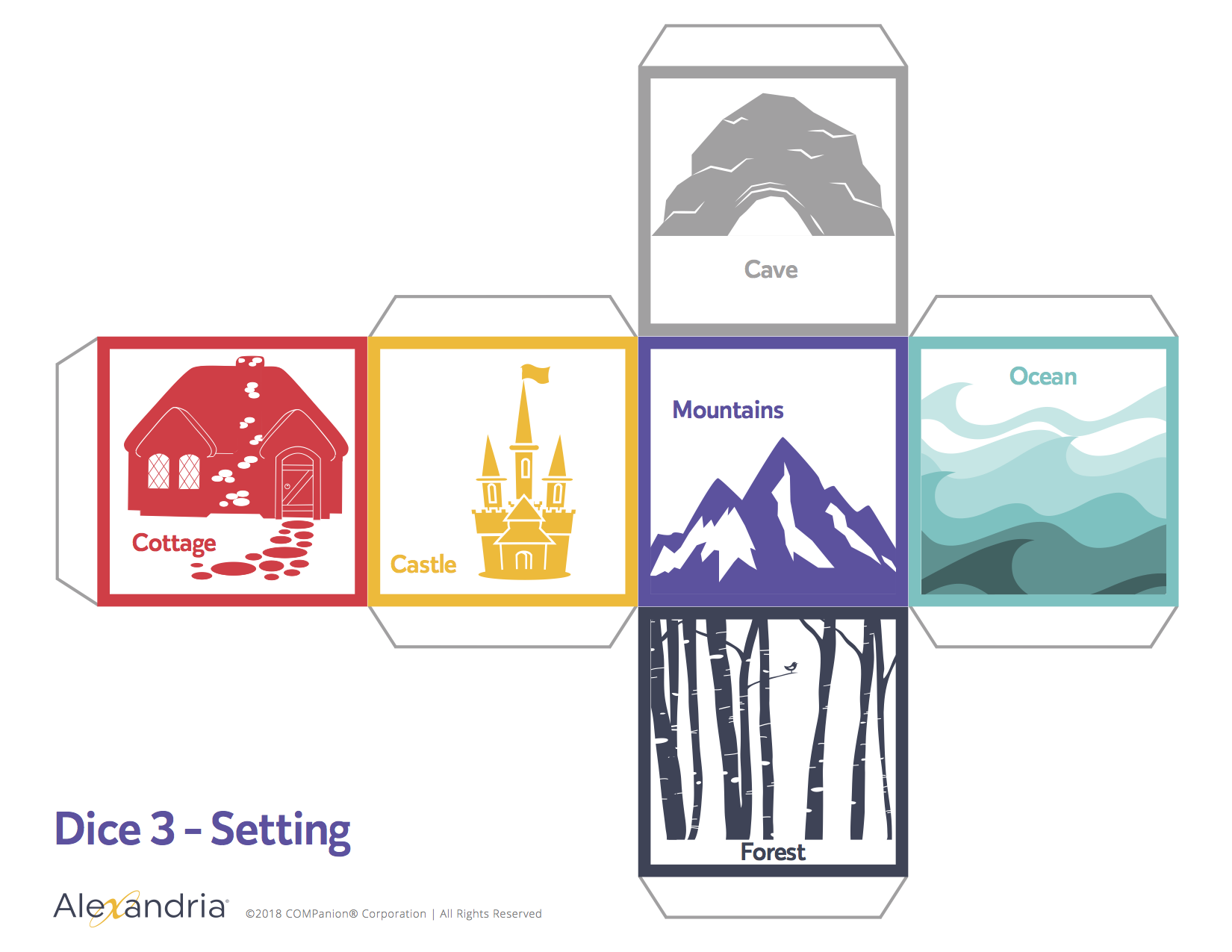
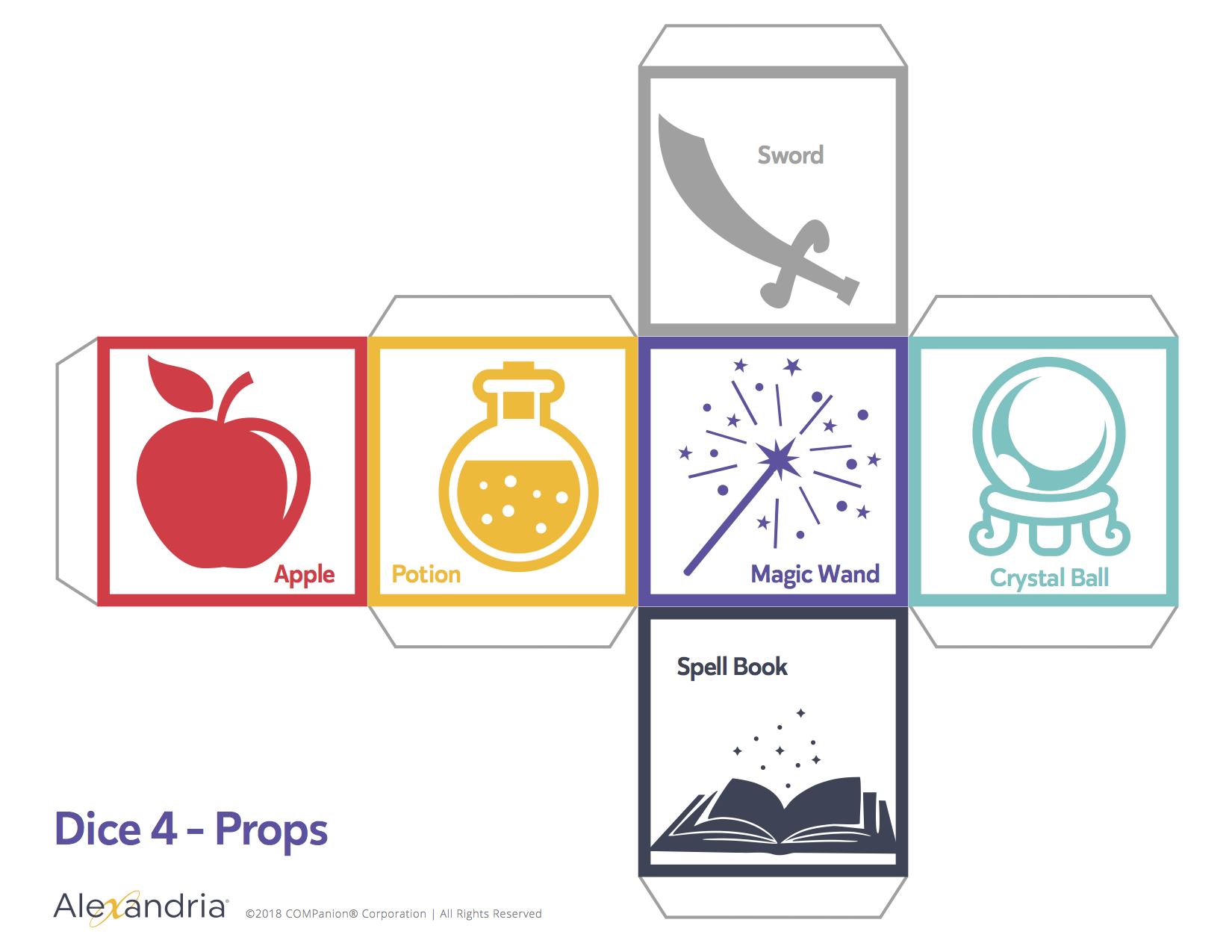
How to Play
Organize students in pairs or groups of three. Give each group a set of the Fairytale Dice. One student will go first by rolling the dice, looking over the pictures, and telling a story incorporating all the results they rolled. Students should have between five to seven minutes to roll, think, and tell a story about the pictures to their partner. After the time is up, the listening student will take their turn telling the story. Try to do at least three rounds of storytelling for each student. The more they try, the better they become!If you are working with an older set of students, you can use the dice as writing prompts. The dice are a great tool to help students be creative and write their own story. It can be a simple warm-up exercise to get brain juices flowing, or a full lesson plan to teach the main elements of storytelling.
To help outline this library lesson plan, we’ve gathered more teaching resources for storytelling.
Key Elements of Storytelling
For students, coming up with a story may seem a little challenging. You can help students feel more confident by laying out the five common elements every good story needs.Setting. This is the time and location in which the story takes place. Settings can be specific or broad. Setting creates the backdrop of the story and can influence the mood. Our Fairytale Dice includes settings. Remind students they can get specific by stating the time of day and the condition of the setting (e.g., twilight near a rundown cottage).
Characters. We’ve included heroes and villains in our dice activity—but that shouldn’t limit the number of characters in a student’s story. Students should include a protagonist, antagonist, and supporting characters.
Plot. The plot is a series of events that connect the setting, characters, audience, and protagonist to the ultimate goal of the story.
Conflict. A story’s conflict is what builds suspense and makes the story interesting. Conflict drives the story!
Theme. It’s what the story is all about! The theme is the main idea or underlying meaning.
Storytelling elements are important for students to know for it deepens the level of reading comprehension. Understanding how a story is constructed provides a frame of reference for recall, a skill needed for learning.
Being familiar with the elements of storytelling also assists students in their own writing. Knowing story elements helps students organize their thoughts and weave their ideas together to create their own story.
Help Students Recognize Story Elements
The list above includes the most common elements of stories. As students develop their skills, they can begin recognizing more complex elements. The best way to help students identify story elements is by asking questions. Start by asking basic questions after reading a book. “Who is the main character?” “What is the problem?” “Where is the story taking place?”—these are good starting-point questions.As students grow more confident in identifying story elements, begin expanding to more complex stories. This will require advance critical thinking skills.
Here is an extra resource for teaching Story Elements using the Five Senses!



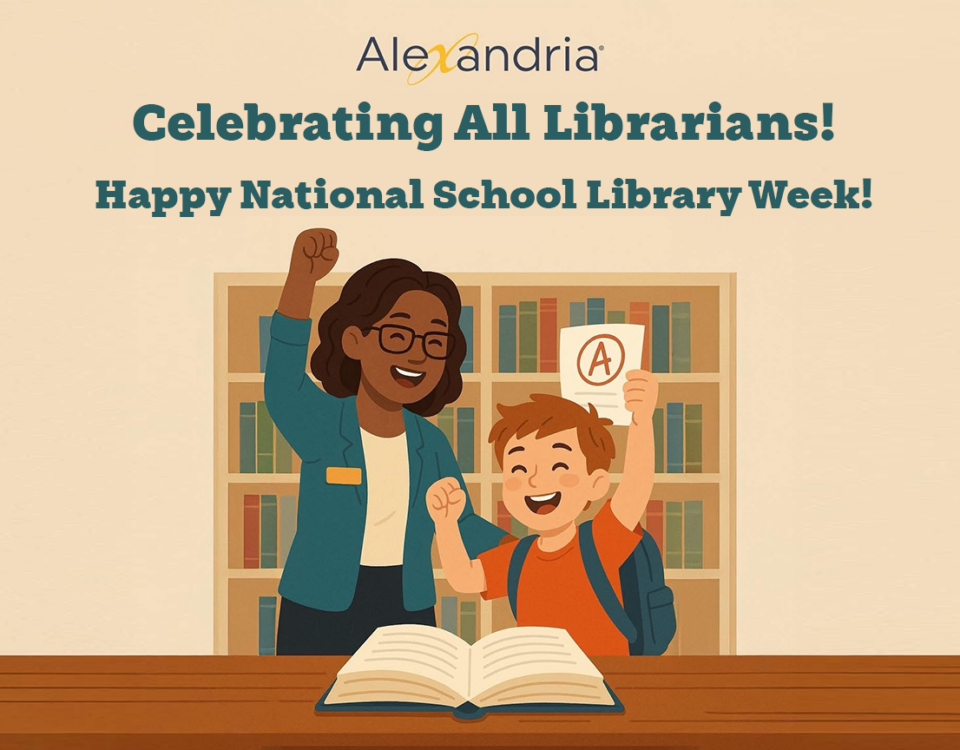

1 Comment
[…] Storytelling Dice Whenever a kid is stumped for inspiration, I break out the free story cubes from goalexandria.com. These are probably most effective with a younger audience, but my tweens have been surprisingly […]